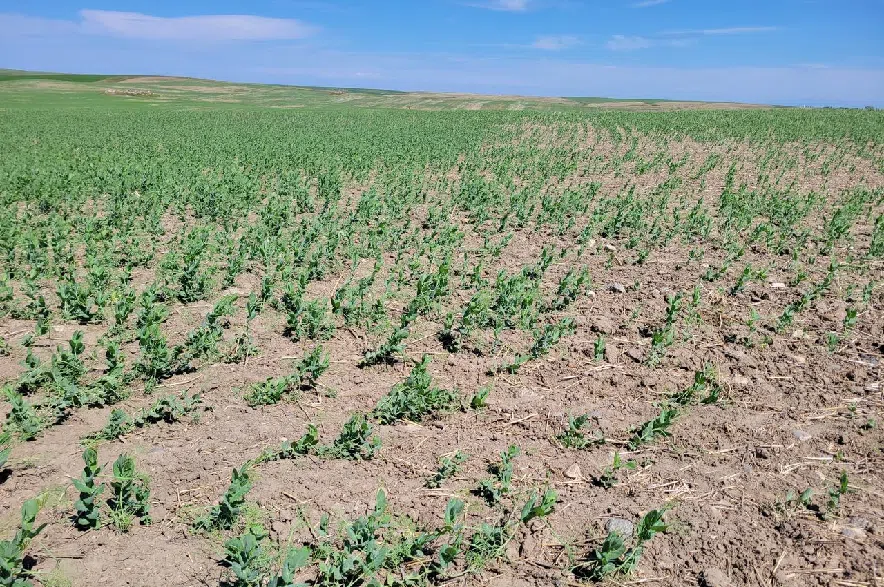Despite rainstorms that swept across the prairies over the past week, producers in some parts of Saskatchewan are still struggling with dry conditions.
According to the latest crop report from the Saskatchewan Ministry of Agriculture, which covered the week ending on Monday, topsoil moisture levels declined across the province, but crops developed rapidly across the board.
Read More:
- Drought support for farmers coming from provincial, federal governments
- Saskatchewan farmers hit with wave of gophers damaging crops
- ‘Worst we’ve seen’: Maple Creek, Enterprise join growing list of RMs declaring drought emergency
Topsoil moisture levels were rated as two per cent surplus, 66 per cent adequate, 23 per cent short and nine per cent very short. For hay crops, moisture levels were rated as two per cent surplus, 53 per cent adequate, 28 per cent short and 17 per cent very short. In pastures, topsoil moisture was rated as one per cent surplus, 44 per cent adequate, 32 per cent short and 23 per cent very short.
The heaviest rainfall in the week covered by the report was in the Archerwall area, where 115 millimetres of rain fell, followed by the Beatty area, which got 85 millimetres.
“All crop types are further ahead of normal stages than they were last week,” the ministry noted in its report.
“Fall cereal crops are the most advanced, followed closely by spring cereal and pulse crops. Oilseed and annual forage crops are the furthest behind their normal stages this year but are significantly further ahead than last year.”
Crops were most advanced in the southwest and northwest regions due to the hot, dry conditions, the ministry said, while the central region is the furthest behind in development.
Crop conditions are a mixed bag across the province, the report noted, largely as a result of the amount and timing of the rainfall the province has seen this season.
“Approximately half of fall and spring cereal crops are in good condition, with most of the other half in fair to poor condition,” the ministry explained.
“For pulses, half to two-thirds of crops are in good condition, with most of the rest in fair condition. Finally, most oilseed crops are in fair to good condition at the end of June.”
About 10 per cent of the province’s hay crops have been cut, the report noted, but quality varies widely across Saskatchewan. About 12 per cent of hay was rated excellent, while 43 per cent was good, 34 per cent was fair and 11 per cent was poor.
“Producers are hoping for timely rain in the coming weeks to produce good second cuts,” the report added.
Hot, dry and windy conditions were the biggest source of crop damage over the week covered by the report, but some producers are also reporting issues with grasshoppers and flea beetles, and some crops were damaged by hail.
“With in-crop herbicide applications largely complete, producers are shifting their focus on scouting crops and spraying for insects and disease when necessary. Livestock producers are busy cutting hay crops and checking fences as livestock are in the pasture,” the ministry explained.
“More timely rain will be needed throughout July and August to sustain yield potential to harvest.”
The full crop report can be found on the provincial government’s website.











